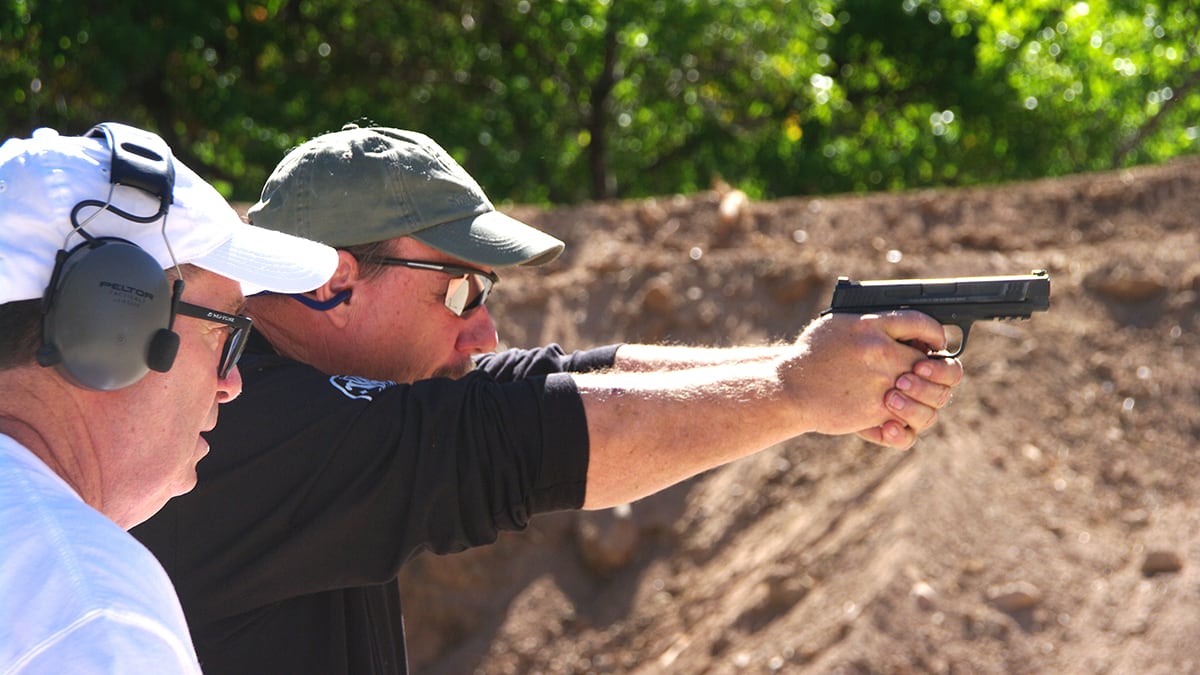Competition shooting remains the fastest growing segment of the firearms industry.
Various shooting sports offer something for everyone — from your 10 year-old child to the professional athlete. Rimfire matches are popping up everywhere using pistols, carbine conversions, even precision rifles.
Action shooting with pistols, carbines, PCCs and shotguns, occur every week.
Precision rifle events continue to gain popularity and shotgun sports remain strong.
Shooting sports cater to everyone — young, old, professional, hobbyist, good, bad, or just learning. Friendly, open, and designed to encourage new shooters they are the future of firearms use.
So, let’s see what it takes to “get your game on” and join in the fun.
It’s a Gear Race!
This may be the most common criticism of competition shooting, but its only partially true. Every recognized organization has clearly defined divisions. They range from production classes to no limits.
Keep it basic and the cost is manageable. Want to be the next national champion, that will require the latest gear and it can easily become a gear race.
Buts let’s get real, those finishing in the top 10 at your local match or top 25 nationally comprise a minuscule portion of the overall shooting population.
For the rest of us mere mortals, it’s not costly and remains great way to spend a Saturday!
Starting from Scratch
Production divisions require simple factory firearms with little or no modification.
Reliability is key no matter your choice. Nothing kills time like stoppages and malfunctions and time is always a factor.
Glock, Smith & Wesson, Sig Sauer, and CZ USA seem the most popular with intro (and even expert) shooters. All have proven reliable, accurate, and easy to run.
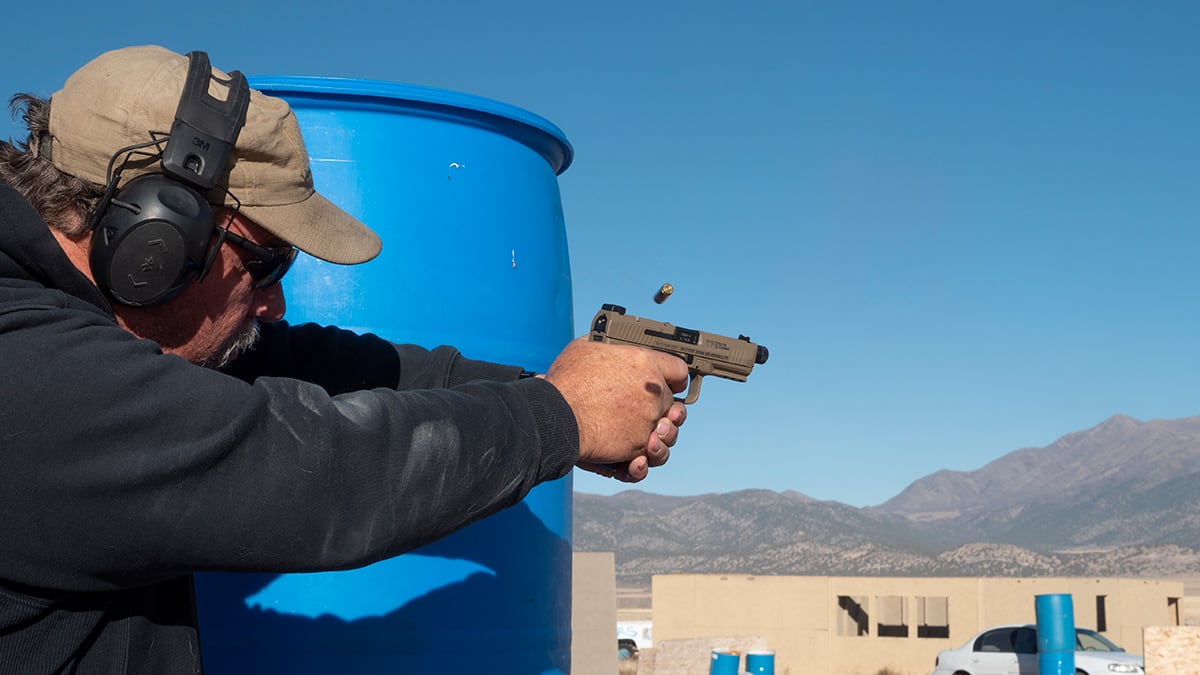
Usable sights are the next key, they must be easy to see, rugged and stay in place. Fiber optic sights remain popular and Trijicon makes a great set along with several other companies.
Simple, reliable, with sights you can see is all that’s needed to get started and do well in many production divisions. Same with rifles or PCC (Pistol Caliber Carbine) for 2 and 3 gun.
Irons work they just need to be visible, stable, and solidly attached but in most cases you will use an RDS.
Most shotguns have quality sights you can get without breaking the bank including fiber optic. Semi-autos are the norm, but you can certainly play the game with a pump action, especially in the more restrictive division.
Reliability remains the key, and while it may not cost you a fortune it may not be cheap either. Competitions can be the toughest test on a rifle, lots of ammo fired quickly, often in heat, rain and ugly conditions.
The precision rifle world is no different, especially on the rimfire side.
Ruger’s RPR Rimfire retails for $529 but can be found for under $400. You need a decent scope, not the best, that will focus down to 25 yards with some usable magnification — 10-16 power seems to be the norm, though more is fine so long as it will focus at short range.
Targets are close, but very small.
Same with the centerfire precision rifles, several are available in the $1200-$1500.00 range including Ruger, Tikka, Mossberg, and several more. It remains one of the more costly competitions, but it can be done.
Upgrading for Speed
Your next step is probably to a division with no capacity limits that allows for trigger improvements.
Most of my career was spent in the IPSC Limited division. Iron sights, high capacity magazines, and some limitations on gunsmithing.
Starting with your base pistol you can get there with a different trigger, magazine extensions and some tuning.
All the major manufacturers are well supported here, maybe the most well supported of all divisions.
Time is key and that’s where capacity comes in. Reloads take time, and the less time you spend doing anything but shooting the better.
Really into it, step up to an STI or Infinity 2011 based pistol, the choice amongst most top competitors in every division but production.
It will just cost you, and this is where the gear race really starts. Want to win your local matches every week, your state finals, or at the national level cannot do it without some modification. Just don’t feel like you must in order to do well, a reliable gun with basic modifications will outperform more than a few highly tuned machines that fail during the match.
I know, it’s a broken record, but reliability is what it’s all about.
Optics carry divisions are becoming very popular for pistols. Each organization is a bit different, but most are production or limited pistols with a bolt on MRDS (Mini Red Dot Sight).
They really don’t make you shoot faster, but you can aim quickly with practice and accuracy at greater distances is vastly improved. Most every major manufacturer makes a production pistol today that will accept one or multipole MRDS.
Red dots have always been popular on rifles in Multigun competitions. Most matches are inside 100 yards making them ideal. You can add muzzle devices that reduce recoil and muzzle rise.
Capacity restrictions may be lifted allowing drums or other high capacity magazines. Optics can be another upgrade.
Targets at 300-500 yards are not uncommon at large matches making optics a must. Use just the optic, or add an RDS for close work that’s offset at 11:00 or 1:00 o’clock.
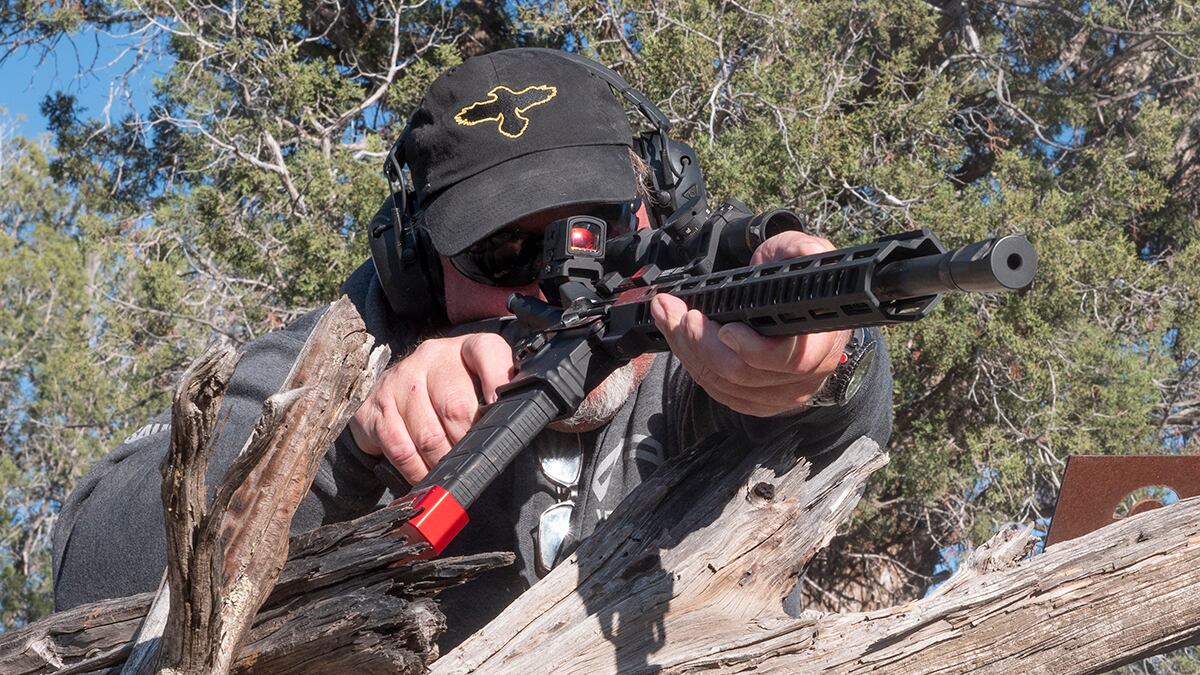
The most common optic seems to be 1-6 power, although 1-8 scopes are growing. Optics are less expensive, lighter, and better quality these days, another straight up benefit from competition shooting.
Still, a cheap scope that breaks or shifts zero will cost you a match, and more importantly any fun you were having so think quality for price not cheap. Winning is not critical for everyone, but losing sucks no matter who you are, and nothing is more frustrating than gear that does not work or breaks. Spend what you need to get the most reliable guns, optics, and equipment you can.
Open division is just like it sounds, the sky’s the limit. This is where many of the world class competitors ply their trade although most shoot multiple divisions.
It’s fast with high capacity everything and the latest and most advanced equipment designed specifically to win. Top competitors are separated by one bad shot, or one stoppage, it’s always close. Its where all the gear race comments come from and they are true.
You can certainly play well at local matches, it’s fun, but you will need to spend some money just to get started. It’s not hard to spend 4K on an open pistol, move to 3 gun and it just adds up. Great division, lots of fun, plenty of glory, but not for the faint of heart.
That being said, money spent on equipment will not buy you placement, everyone has the best so it requires the greatest precision, accuracy, and efficiency to win.
Other Competitions
Precision rifle competitions remain popular but require more investment by comparison.
Rimfire (so, .22 caliber) is not too bad to start, but you are going to need a couple grand or more to get started in the centerfire matches.
Match ammunition is a must if you don’t reload. You need an accurate rifle, preferably with factory ammunition support.
Hornady’s match ammunition is plenty accurate, available and reasonably priced, a good reason 6mm and 6.5mm Creedmoor are so popular.
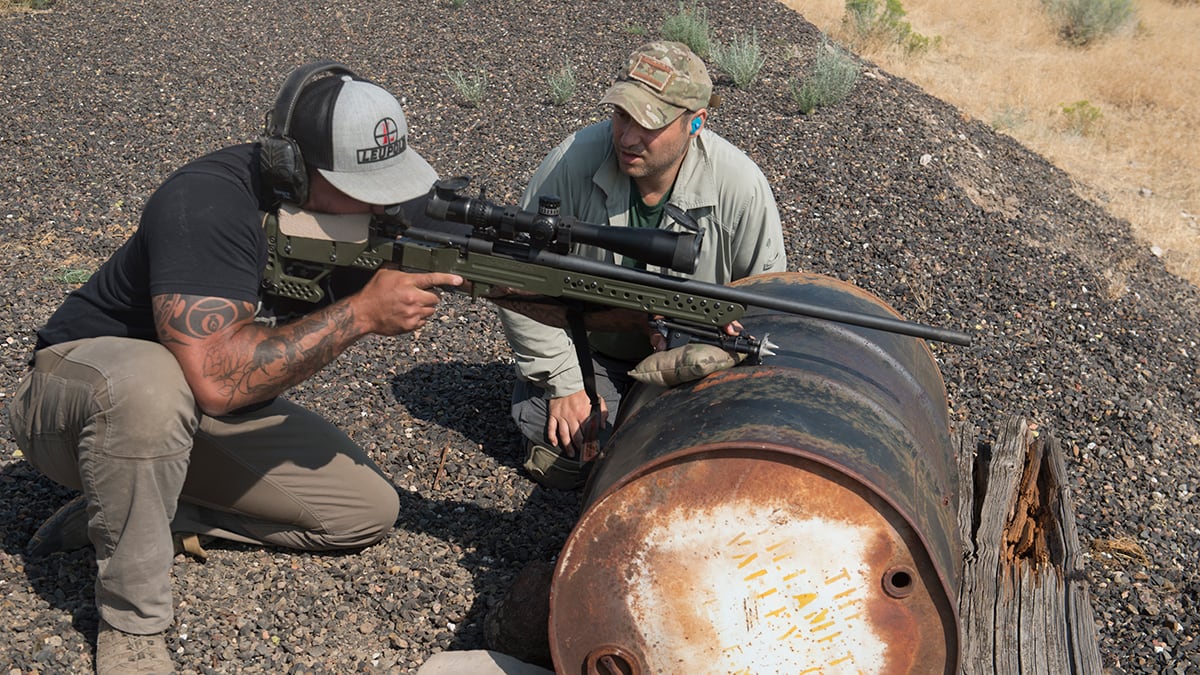
You can play the game with a .308, but you start behind and will probably never catch up. Cost for ammo is the same these days so why make it harder than you need to.
Buy the best scope you can afford, solid mounts, a decent bi-pod, sling, and a pack or bag. It can be done with a simple 3-day pack, purpose built bags are abundant if not prolific.
Many competitors look like they are carrying their living room furniture, it’s fine but not necessary. Some of the best competitors get it done with a pack, sling, and a tripod.
Spend what’s left on ammunition, training, practice, and regular matches.
Another popular competition is SASS, Single Action Shooting Society or Cowboy Action. These are as much family get-togethers as competitions, although the top levels are incredibly skilled and fast.
Most widely known for dressing up in period clothing and taking a “stage” name it’s quite the event. Pistols are single action, rifles have levers.
Most shotguns have two barrels although lever actions are seen on occasion as well as period pump actions. Ammunition can be modern but there are divisions that require actual black powder. Targets are large by comparison and close, pretty much like it was in the old west!
Take the Jump
These are just the most popular competitions that seem to be growing in popularity. High Power rifle matches remain strong, with the annual Camp Perry match being one of the most prestigious in history.
Going back to 1903 they include service rifles and traditional rifles like the M1 Garand and 1903 Springfield. Modern rifles are used in F class, and axis and allies includes service rifles from all over the world.
You can shoot bench rest, silhouette steel with handgun, action steel, even adventure and endurance races with firearms. Shotgun shooting sports like sporting clays, skeet, and trap remain strong and popular Olympic.
All of them have their own special appeal and draw, each with its purpose, but above all it’s about the fun. Competition is certainly there, but most are all about reaching out to new competitors, enjoying like minds with like interests, and growing the sport.
In most cases you can get away with minor upgrades to your firearms but the farther you move on up the less that’s true. You will reach a point where it’s just less expensive, easier, and better to buy a purpose built gun.
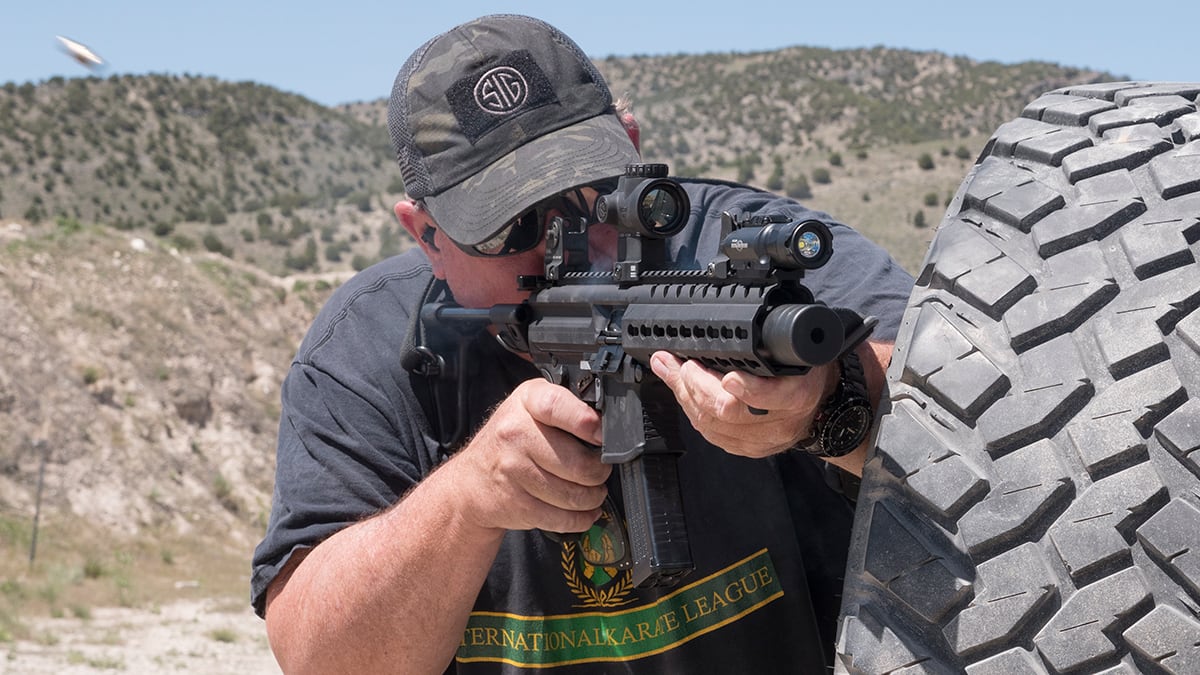
Competition ready pistols are available from most manufacturers, and custom builds are prolific at best. Savage makes one of the best out of the box competition AR’s ever used, along with Caracal, Daniel Defense, Seekins Precision and many others.
Pistol Caliber Carbines are all the rage with dozens to choose from that star simple and can cost as much as a rifle. Benelli, Mossberg and Remington make competition tube fed guns with a few magazine fed customs out there.
At no point in the history of firearms production have there been so many choices.
Bottom Line
Every segment of the firearms market garners some sort of following, but the most open, inclusive, and longest lasting are shooting competitions.
Even urban areas can have indoor competitions. It’s a fantastic way to introduce, train, and keep the interest of the next generation.
For as long as firearms have been used someone has tried to figure out a way to compete with them. Whether to improve hunting skills, duty and self-defense, military applications, or just plain fun there is something for everyone.
What matters is spreading the word to those that follow, and today nothing does that better than the shooting sports.
